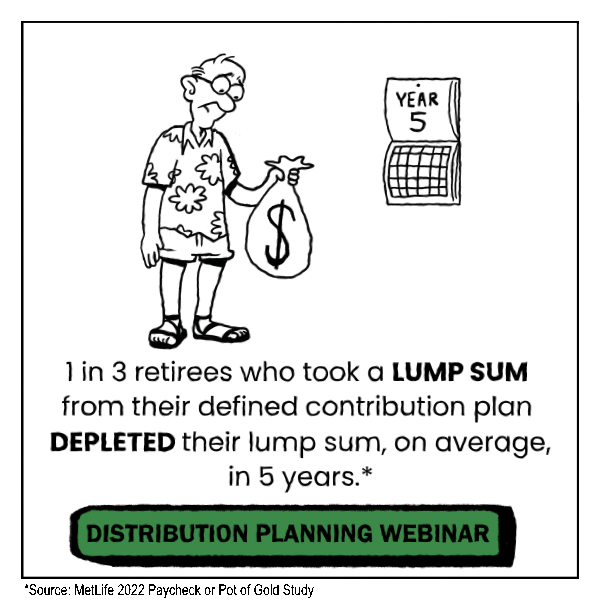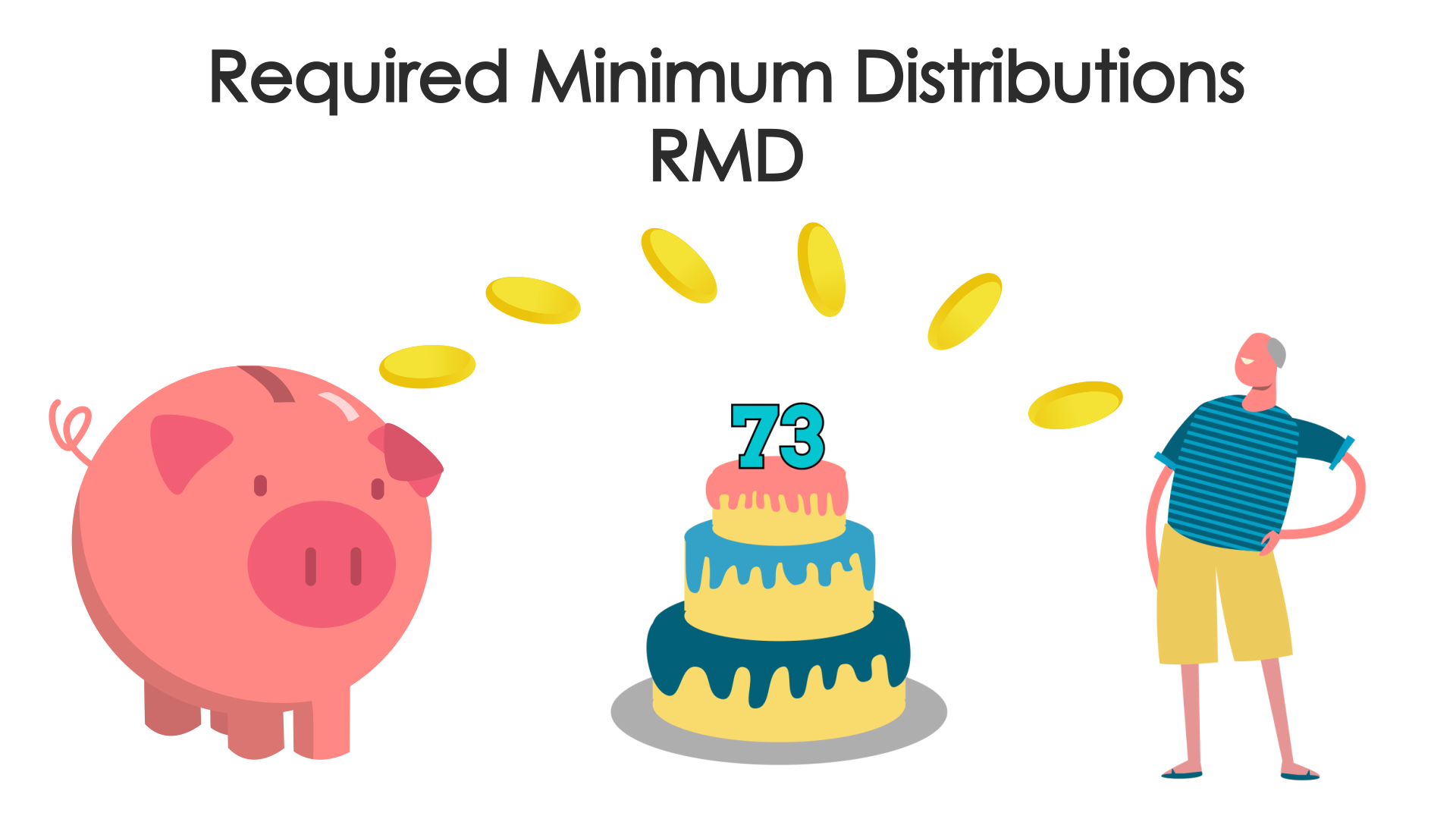
 Office of Labor Relations311
Office of Labor Relations311 Search all NYC.gov websites
Search all NYC.gov websites
The Deferred Compensation Plan
NOTE: The Distribution Planning video is interactive. When visible, you may use the left menu to jump to specific topics within the video.
Learn About Our Individual Consultation Service
News:
Bank Change for Participants Receiving Withdrawals - The Bank of New York Mellon to be New Payor
Effective January 1, 2023, the Deferred Compensation Plan will be changing its payment disbursement banking institution from State Street Bank to The Bank of New York Mellon. If you are receiving current installment payments from your Deferred Compensation Plan or NYCE IRA account(s), you will see that the bank payor name will reflect The Bank of New York Mellon. There is no additional action needed on your part, all payments will continue to be sent to your bank account on file.
Withdrawing Assets
The New York City Deferred Compensation Plan has been with you throughout your working life and can continue with you throughout retirement.
Retired participants have access to all of the same investment funds, Plan services and low fees as active employees. However, there is a difference when it comes to when they have to begin withdrawing assets.
In accordance with IRS regulations, Plan participants who are age 73 or older are required to withdraw a certain amount of money, called a Required Minimum Distribution (RMD), from their 457, 401(k) and/or Traditional IRA accounts each year.
Participants age 73 or older who are still working for the City have the option of taking RMDs but are not required to do so.
In addition to the information below, you can also learn about your distribution options by reviewing the Plan's Participant Distribution Guide, viewing the Distribution Planning video or visiting our Financial Wellness Webinars page and registering to attend a free Distribution Planning webinar.
Distribution Choices
At the time a participant decides to withdraw funds, whether in-service (upon reaching age 59½) or post-service, they can elect:
Direct Payment or Rollover ➤
Pre-Tax 457: Upon severance from City employment, or upon reaching age 59½, 457 Plan participants can receive direct payments, without penalty, regardless of age. Funds can be rolled over into other eligible retirement plans (NYCE IRA, 457, 401(k), 403(b), or a retail IRA), but, once rolled over, funds may become subject to a 10% early withdrawal penalty.
Roth 457: Upon reaching age 59½, participants whose initial Roth contribution was more than five years ago can receive tax-free distributions (Qualified Distribution). Non-Qualified distributions are subject to all applicable taxes, but no 10% penalty. Funds can be rolled over to other Roth 457, Roth 401(k), Roth 403(b), or Roth IRA accounts.
Pre-Tax 401(k): Either upon severance from City employment, or upon reaching age 59½, participants can receive direct payments or roll over their account to another eligible plan (NYCE IRA, to another 457, 401(k), 403(b), or a retail IRA). Withdrawals taken before age 59½ may be subject to a 10% early withdrawal penalty. Effective December 31, 2015, distributions from pre-tax 401(k) and 401(a) accounts by qualified public safety employees who have reached age 50 will also be exempt from the 10% early withdrawal penalty. Please consult your tax advisor to determine eligibility.
Roth 401(k): Upon reaching age 59½, participants whose initial Roth contribution was more than five years ago can receive tax-free distributions (Qualified Distributions). Non-Qualified distributions are subject to all applicable taxes and a 10% early withdrawal penalty. Funds can be rolled over to another Roth 401(k), Roth 457, Roth 403(b), or Roth IRA.
IMPORTANT: The Deferred Compensation Plan is a low cost plan compared to retail IRA providers, therefore, participants should compare all fees before making any rollover decisions. If, however, you do choose to rollover, remember that you can always roll your money back to the NYCE IRA. The NYCE IRA has the benefit of the same investment options and, therefore, the same cost structure as the Deferred Compensation Plan.
Learn More about rolling funds back into the Plan via the NYCE IRA
Method of Payment ➤
There are four methods of payment participants can choose:
Full Withdrawal: Distribution of the entire account balance.
Partial Withdrawal: A portion of the account the participant specifies ($1,000 minimum) either in a dollar amount or a percentage of their account balance. There is a maximum of five (5) paper requests requests per year. Requests in excess of the maximum may be subject to a fee.
Installments: Distributions taken over regular intervals (monthly, quarterly, semi-annually, or annually) totaling either the entire account or a portion of the account as specified by the participant.
Partial Withdrawal with Installments: A partial payment followed by distributions made over regular intervals totaling either the entire account or a portion specified by the participant.
Installments offer several advantages:
• Savings on taxes: When you take a lump-sum withdrawal, you have to pay all your taxes at once. With installments, your tax liability is spread out over time.
• Retirement Income: One of the primary goals of the Deferred Compensation Plan is to provide a portion of your retirement income. Choosing installments may provide a stream of retirement income for years to come.
• Potential Account Growth: As long as there is money in your account, it will remain tax-favored and has the potential to grow.
IMPORTANT: A participant can determine the length of his/her distribution by selecting either (a) the number of payments he/she wants to receive; (b) the dollar amount of the payments; or (c) elect to have distribution paid out over his/her life expectancy. However, in no event can a participant's account be distributed over a period of time that is longer than his/her life expectancy.
Commencement Date ➤
Upon severance from City service, or upon reaching age 59½, participants can begin receiving distributions at any time by either accessing their account online or submitting a Distribution Form to the Plan's Administrative Office. Participants can change or stop distributions at any time.
Effective December 31, 2015, distributions from pre-tax 401(k) and 401(a) accounts by qualified public safety employees who have reached age 50 will also be exempt from the 10% early withdrawal penalty. Please consult your tax advisor to determine eligibility.
Note: Participants must be severed from City service for at least 45 days before a distribution can be processed.
Required Minimum Distributions (RMDs): Participants who are separated from City service are required to start receiving distributions from their account by April 1st of the year following the year in which they reach age 73.
Direct Deposit ➤
Direct Deposit (Electronic Fund Transfer) is available at no charge. Funds will be made available 3-5 business days after the date the funds are withdrawn from the participant's Deferred Compensation Plan account. You must complete an Direct Deposit Form, available in the Forms and Downloads section of this website, or complete the Direct Deposit section of the Distribution Form when requestiong a distribution.
In-Service Distributions
Generally, participants may not withdraw funds from the Deferred Compensation Plan while they are still employed by the City. However, there are certain exceptions which are described below.
Withdrawing Assets at Age 59½ or later ➤
Age 59½ and the 457 Plan
Participants who are at least age 59½, may withdraw funds from their 457 account, even if they have not severed from City service. Roth 457 participants, in addition to meeting the 59½ age requirement, must have made their initial Roth contribution more than five years ago if they wish to take a qualified distribution from their Roth 457 account income tax-free.
Age 59½ and the 401 Plans
401(k) Plan participants age 59½ and older are eligible to take distributions, without penalty, from their 401(k) account while still working for the City. Roth 401(k) participants, in addition to meeting the age requirement, must have made their initial Roth contribution more than five years ago if they wish to take a qualified distribution from their Roth 401(k) account income tax-free and without penalty. 401(a) Plan participants can take an in-service distribution starting at age 59½.
To receive an in-service distribution, access your account online or submit a Participant Distribution Form indicating the distribution request is an in-service withdrawal.
Taking a Loan from Your Account ➤
Please note - The Plan has been receiving an unusually large number of loan requests. As a result it may take up to 4 weeks for your loan application to be reviewed and processed. Please plan accordingly when submitting your application.
Any active employee who is a participant in either the 457 or 401(k) plan is eligible to apply for a loan if the plan for which the loan is taken has an account balance of $5,000 or more at time of application. 401(k) Roth accounts are not available for loans.
Loans are funded directly from a cash-out of the participant's pre-tax contributions in his/her 457/401(k) Plan accounts. The withdrawal will be deducted proportionately from all funds in the participant's account. Loan payments are made with after-tax dollars and are applied to the interest and finally to the principal, thereby reducing the balance owed. Loan payments received will be invested in the same manner as the participant's current investment allocation in the applicable Plan and will be reflected on the participant's statement.
Before deciding to take a loan from the Deferred Compensation Plan, a participant should make sure they understand how taking a loan can affect his/her retirement savings. Taking a loan from his/her Deferred Compensation Plan account can greatly impact ones future account balance. Therefore, a participant should consider other ways to cover unexpected expenses.
The minimum loan amount available from either the 457 or the 401(k) Plan is $2,500.
The maximum loan amount a participant may obtain is the lesser of:
- One half of the account value in the 457 or 401(k) Plan (i.e., account balance minus current outstanding loan balance in the 457 or 401(k) Plan); or
- $50,000 reduced by the highest outstanding balance of loans from all qualified employer plans of the same employer during the 1-year period ending on the day before the date on which such loan is going to be made.
Participants can log into their accounts and use loan modeling to estimate their loan repayment amounts. These projections will not take into account any outstanding pension or TDA loans a participant may have.
There is a loan origination fee in the amount of $50.00 which will be deducted from the loan amount approved and a quarterly maintenance fee of $8.75 which is deducted from the participant’s account.
Participants wishing to apply for a loan must complete a Loan Application and submit it to the Plan’s Administrative Office.
Attention members of the Police Pension Fund: Beginning on June 1, 2022, Deferred Compensation loan requests must be submitted to the Police Pension Fund (original forms only, walk-ins or by mail). The Fund will submit your completed application to Deferred Compensation for processing. When completing the form, please include your name, address, and only the last four digits of your social security number. Please be advised, all forms must be notarized.
For additional information, and an application, download the Plan's Loan Guide, available from the Forms and Downloads section of this website.
Hardships/Emergency Withdrawals ➤
Should a participant experience a financial hardship, he/she can suspend or decrease deferrals to the 457 or 401(k) as that, in itself, might be enough to alleviate the financial burden.
What would qualify a participant for an emergency withdrawal under the 457 Plan?
The 457 Plan’s emergency withdrawal provision is for "unforeseeable emergencies" defined as "...a severe financial hardship to a Participant resulting from a sudden and unexpected illness or accident of the Participant or of a dependent (as defined in Section 152(a) of the Internal Revenue Code) of the Participant, loss of the Participant’s property due to casualty, or other similar extraordinary and unforeseeable circumstances arising as a result of events beyond the control of the Participant."
What is NOT an unforeseeable emergency?
- Mismanagement of credit cards, or other credit devices
- Payment of school tuition
- Payment of federal, state, or local income taxes
- Divorce settlements
- Down payment for a home
- Purchase or replacement of a major appliance
- Auto payment or repair
(The preceding examples by no means represent a complete list of non-emergencies.)
Download a 457 Emergency Withdrawal Application
What would qualify a participant for a hardship withdrawal under the 401(k) Plan?
The 401(k) Plan contains a provision permitting the withdrawal of funds to meet an "immediate and heavy financial need" as that term is defined by the Internal Revenue Code. For example, the need to pay funeral expenses of a family member would constitute an immediate and heavy financial need. However, the purchase of a boat or television would not constitute an immediate and heavy financial need.
The Internal Revenue Code provides that, as a source of funds, the Deferred Compensation Plan is considered by the Internal Revenue Code as a last resort. Therefore, a participant must have used other means of securing funds, such as insurance payments; personal, pension, and MCU loans; and available personal assets before applying for an emergency or hardship withdrawal from the Plan.
Download a 401(k) Hardship Application
How does a participant apply for an emergency or hardship withdrawal from the Plan?
To apply for an emergency or hardship withdrawal from the Plan, a participant must submit a hardship application to the Deferred Compensation Plan with the following documentation:
• A copy of last year’s tax return and Form W-2
• Signed and notarized application
• Copies of MCU, pension and bank loan approvals/denials
• Documentation of the unforeseeable emergency or the immediate and heavy financial need
• Most recent paystub
These documents must be delivered to the Plan’s Administrative Office for preliminary review and presented to the Board for final review. Applications cannot be submitted to the Board without full documentation.
The Deferred Compensation Board reviews emergency withdrawal applications on a case-by-case basis. The Board meets each month and, using the criteria set forth by the IRS, determines which circumstances qualify for a withdrawal. If a case is approved, the applicant is granted that portion of his account that is needed to meet the emergency, as determined by the Board.
The participant continues to remain a member of the Plan after obtaining an emergency or hardship withdrawal and the remainder of his/her account continues to participate in the Plan's investment options. If the participant has a remaining account balance, he/she will continue to receive quarterly statements and newsletters, and be charged the administrative fee.
Purchase of Permissive Service Credits ➤
A Plan participant can use his/her pre-tax 457 or 401(k) Plan account to purchase permissive service credits in a City pension system. The participant will need to contact his/her pension plan directly to obtain the appropriate form to request the purchase of service credits. After receiving documentation from the pension system, the participant will need to submit the documentation along with a In-Service Distribution Form for Purchase of Permissive Service Credits to the address indicated on the form. Payment will be made directly to the pension system.
Small Account Withdrawals ➤
A participant may receive a distribution from the 457 Plan prior to separation from City service only if all of the following criteria are met:
- the total account balance does not exceed $5,000,
- no amount has been deferred by the participant during the two year period ending on the date of distribution, and
- there has been no prior distribution to such participant under this provision.
Every January, the Plan identifies those participants who meet the criteria for a 457 Plan small account withdrawal. A letter is automatically sent to these participants notifying them that, if they so request, their account can be distributed to them in a lump sum.
After obtaining a small account withdrawal, the participant does not remain a member of the 457 Plan. However, the employee may rejoin the 457 Plan at any time.
Qualified Birth or Adoption ➤
Effective January 1, 2020, Plan participants may take an in-service distribution, of up to $5,000 per child per plan, due to a qualified birth or adoption. Participants are eligible for the distribution within one year of the birth of the participant’s child or the participant’s adoption of a child who is either under age 18 or who is physically or mentally incapable of self-support. Such distributions will not be subject to an early withdrawal penalty. The distribution payment will not be subject to mandatory income tax withholding and will not be eligible to roll over.
An in-service distribution due to a qualified birth or adoption made from either the 457 Plan or the 401(k) Plan may be repaid to the applicable Plan, in an amount not to exceed the amount of such distribution. The repayment shall be treated as a trustee-to-trustee incoming rollover and payment can only be made in the form of a check made payable to the applicable Plan.
Download the Qualified Birth or Adoption of a Child In-Service Distribution Form
Post-Service Distributions
You do not need to immediately contact us or withdraw your funds from the Plan upon severance from City service. In fact, you may choose to leave your money in the Plan and continue to enjoy the many benefits the Plan has to offer up until age 73 when minimum distributions become required.
The Plan offers very flexible distribution options to help you decide how and when you would like to receive your money, ranging from taking a one-time partial payment to setting up long-term installments that can be deposited directly into your bank account.
Before submitting a distribution form, it's a great idea to register to attend a free Distribution Planning webinar to become familiar with various options that are available.
What if I rejoin City service? ➤
Should you return to City employment and elect to rejoin the Deferred Compensation Plan , the distribution of your account will commence as you previously chose, unless you elect to change or stop distributions.
When you rejoin the 457 Plan or the 401(k) Plan, a second account will be established for your new contributions. You will receive a statement each quarter, which will detail the contribution account and the distribution account. A single fee will be charged for the two accounts.
What if I begin working for another employer? Can I roll funds to their plan? ➤
If you go to work for another governmental employer or tax exempt organization offering a section 457 plan
If you begin working for another governmental employer or tax exempt organization offering a section 457 plan, you may transfer your account balance to your new employer's plan without the withholding of any taxes. You must enroll in the other plan before the transfer can occur.
If you go work for another employer offering a 401(k) plan
If you begin working for another employer offering a section 401(k) plan, you may transfer your account balance to your new employer's plan without the withholding of any taxes. You must enroll in the other plan before the transfer can occur.
Required Minimum Distribution (RMD)
Retirement accounts are intended to be used for retirement income. That's why, when you reach a certain age, the IRS requires you start taking money out of your retirement accounts each year. These amounts are called Required Minimum Distributions, or RMDs.
You must begin taking RMDs by your "required beginning date" which is April 1st of the calendar year following the calendar year in which you attain age 73, or the calendar year in which you retire from City service, whichever is later. If you elect to defer your first distribution up until April 1st of the year after you turn 73, you will be required to take an additional minimum distribution payment that year. Thereafter, you must take at least the required minimum distribution by December 31st of every calendar year. Your RMDs will be recalculated by the Plan each year based on your age and account balance.
Please remember that RMDs are the smallest distribution you are permitted to take. You may choose to take larger distributions and do not need to wait until your "required beginning date."
Are all of my retirement accounts subject to RMDs? ➤
RMDs are required for all Pre-tax 457s, 401(k)s, 403(b)s, Union Annuities, Traditional NYCE IRA accounts and other non-City retirement accounts you may have.
If you are participating in more than one type of plan within the Deferred Compensation Plan, or if you have an outside 457 or 401(k), your minimum distributions must be calculated and taken separately from each plan.
RMDs are not required for Roth 457s, 401(k)s or Roth IRAs, such as the Roth NYCE IRA. These funds can continue to grow tax-free for life, without being subject to Required Minimum Distributions. This may be important if you're looking to maximize the amount of tax free retirement assets left to your beneficiaries.
What is my "required beginning date?" ➤
After you turn 73, you must take your first RMD by April 1st of the following calendar year. However, if you're still working for the City when you turn 73, you will not be required to take RMDs until the end of the calendar year you retire.
After your first year, all future RMDs must be taken by the end of the calendar year.
How do I set up RMDs? ➤
To take your RMDs, you have to fill out a Deferred Compensation Plan Participant Required Minimum Distribution (RMD) Form, which can be found in the DCP Forms and Downloads section of our website.
Your RMD is recalculated each year using the applicable IRS table and your previous year end account balance.
One way to ensure you're satisfying RMD requirements is to have those payments automatically calculated and distributed to you. You can do this by selecting "Life Expectancy" payments when filling out the distribution form.
What happens if I fail to take my RMD? ➤
It is your responsibility to initiate minimum distributions (or distributions in greater amounts) no later than April 1st of the calendar year following the later of the calendar year in which you attain age 73 or the calendar year in which you retire from City service. It is also your responsibility to ensure you receive payments meeting the minimum distribution requirements each year.
If you fail to take the minimum distribution amount required each year, the Internal Revenue Service may impose a penalty equal to 25% of the amount you should have taken but did not. For example, if you should have taken a distribution equal to $2,000 during the year and you did not take any distributions, the Internal Revenue Service may assess a penalty equal to $500.
What if I have more questions? ➤
If you have more questions about RMDs, be sure to register to attend a free Distribution Planning webinar. You can also learn more about RMDs in the Required Minimum Distribution section of the Participant Distribution Guide or, call our Client Service Center at 212-306-7760.

Life Expectancy Tables
View the Plan's Domestic Relations Order (DRO) Policy
Deferred Compensation Plan Forms and Brochures
In-Plan Rollover Form
457 Emergency Withdrawal Application
401(k) Hardship Application
Participant Distribution Guide/Form
Learn more about the NYCE IRA
Register to Attend a free Financial Wellness Webinar
Deferred Compensation Plan videos









